Sui Blockchain: Exploring the Object-Centric Model and Move Language
The Sui blockchain is a cutting-edge layer-1 (L1) protocol designed to overcome the common limitations of traditional blockchain systems. It achieves this through a unique combination of an object-centric data model and the Move programming language, offering enhanced scalability, security, and efficiency. This article will explore these core components of Sui, highlighting its potential to revolutionize the blockchain landscape.
What is Sui’s Object-Centric Model?
Sui’s object-centric model deviates from the account-based models used by blockchains like Ethereum and the UTXO model found in Bitcoin. Instead of focusing on accounts or transaction inputs/outputs, Sui treats every asset, including smart contracts and NFTs, as individual objects.
Key Differences:
- Account-Based Model: Transactions change account balances. Prone to reentrancy attacks if not carefully coded.
- UTXO Model: Transactions have simple inputs and outputs, requiring more data to be transmitted with each transaction
- Object-Centric Model: Transactions take objects as inputs and transform them into output objects, simplifying the process of creating secure software.
Each object in Sui records the hash of the last transaction that modified it, providing a clear history and facilitating secure asset management. This approach offers several advantages:
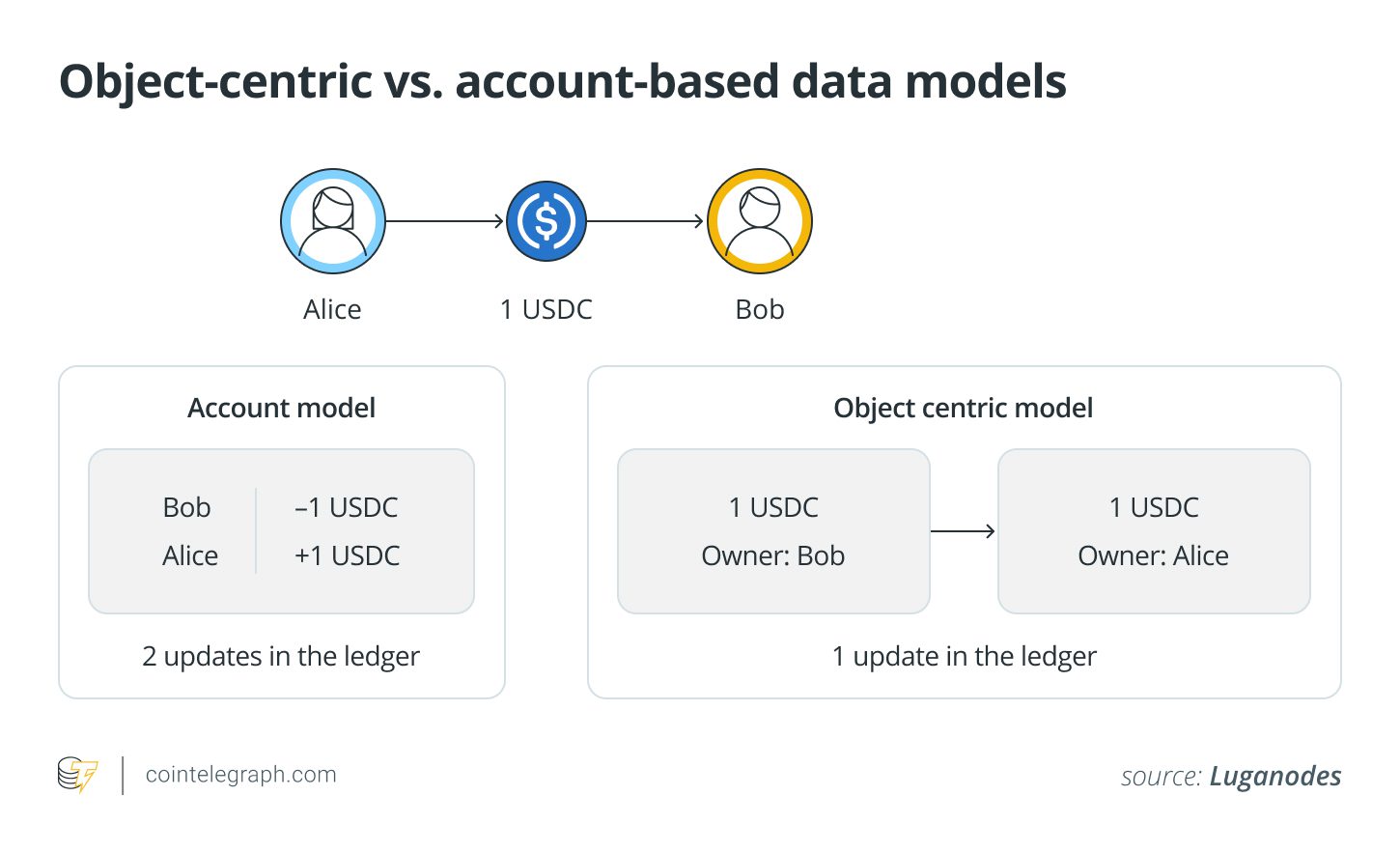
The Role of the Move Programming Language
Sui leverages the Move programming language, originally developed by Diem, to ensure secure asset representation and access control. Move’s key features include:
- Linear Logic: Ensures that digital assets cannot be duplicated or destroyed. When a transaction involving an asset occurs, Move updates the asset’s state, consuming its previous state and producing a new state.
- Access Controls and Permissions: Objects have defined access controls, enhancing security and preventing unauthorized asset use.
Move’s design significantly reduces vulnerabilities common in account-based chains, such as reentrancy attacks. In Sui, ownership transfers are explicit and atomic, preventing unauthorized state changes. By baking financial primitives into the language from the start, it simplifies secure smart contract development.
Advantages of Sui’s Model
Sui’s object-centric model offers several key advantages over traditional blockchain architectures:
- Enhanced Security: Reduced risk of reentrancy attacks and other common vulnerabilities.
- Simplified Development: Easier to write secure code with Move’s intuitive semantics.
- Efficient Asset Management: Streamlined management of complex assets like NFTs. Each NFT can be treated as a distinct object with intrinsic properties and permissions.
Improved Scalability and Performance
The object-centric model facilitates sharding and parallelization, leading to significant performance improvements. Sui boasts a time-to-finality of approximately 390 milliseconds and a potential throughput exceeding 100,000 transactions per second.
Database Sharding: Sui’s architecture simplifies database sharding. Objects can be processed and managed independently without requiring global state synchronization, unlike account-based chains that must synchronize shard data, introducing latency and complexity.
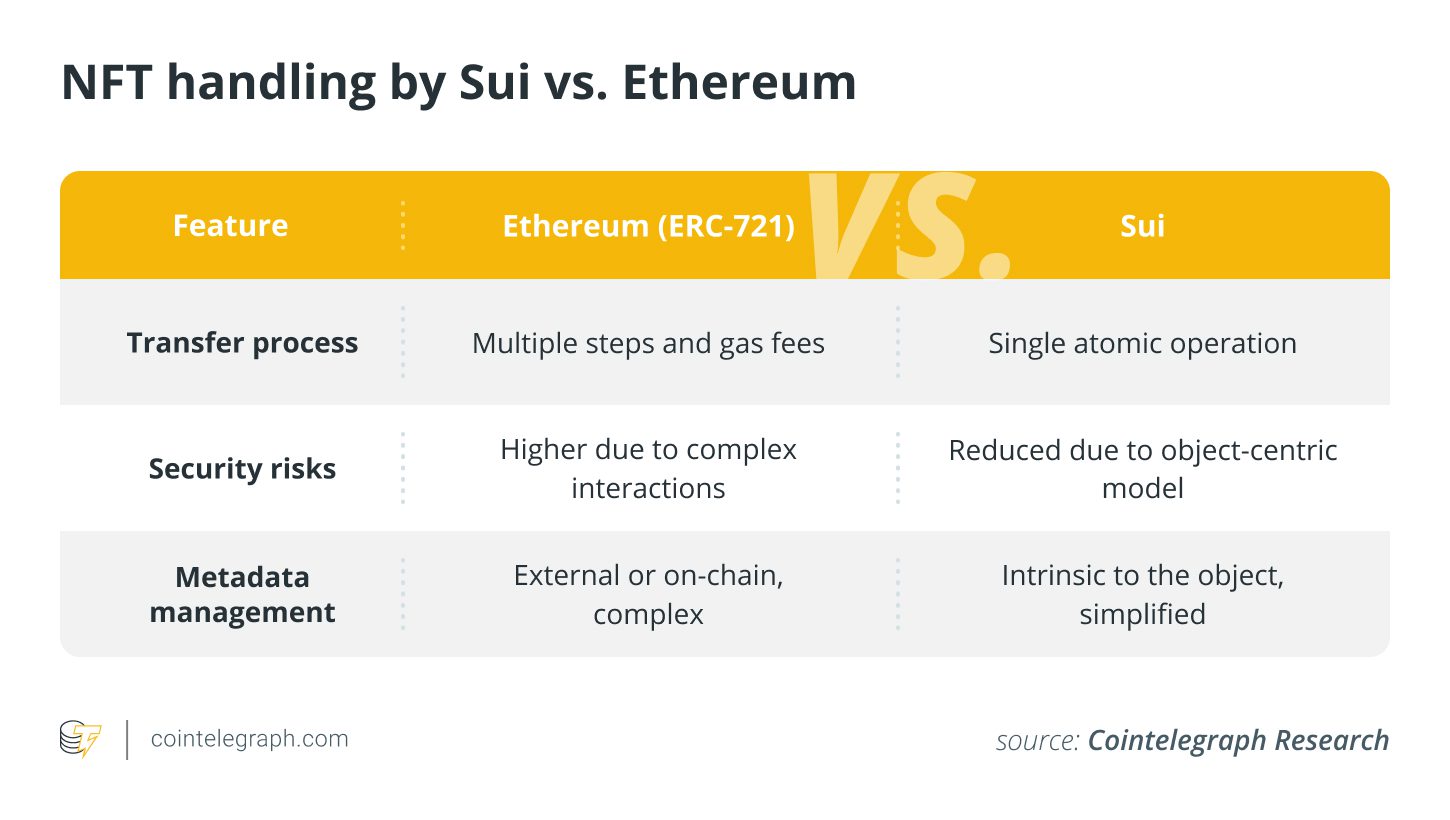
Parallelized Transaction Processing: Sui utilizes state access parallelization. Transactions declare which parts of the state they will access, allowing the system to identify independent transactions that can be executed concurrently. Operations on one object do not impact operations on another, naturally allowing them to be processed concurrently.
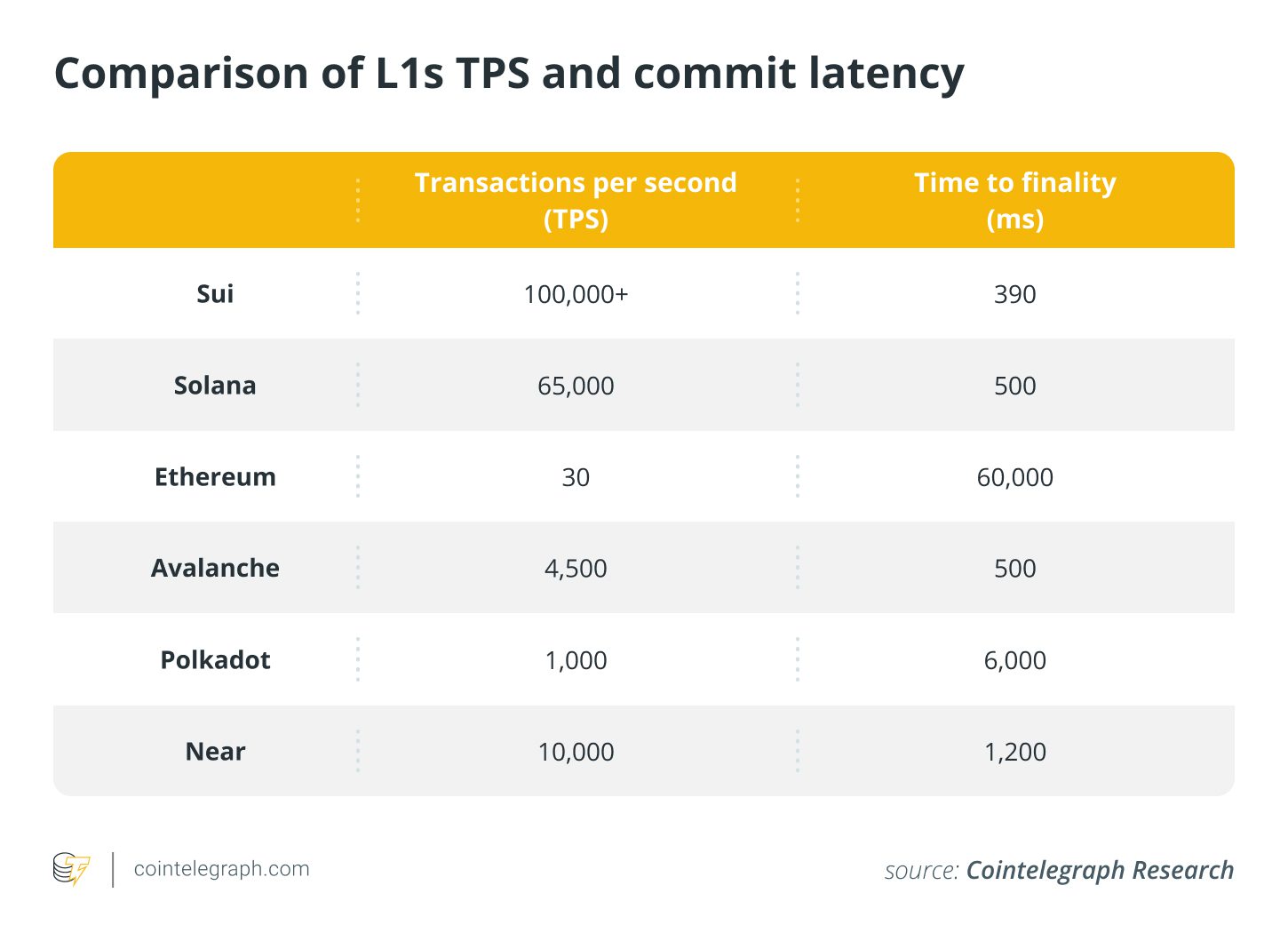
Parallelization Methods
Sui leverages the state access method for parallelization, which is also used by Solana. In this method, transactions declare which parts of the state they will access, enabling the system to execute independent transactions concurrently.
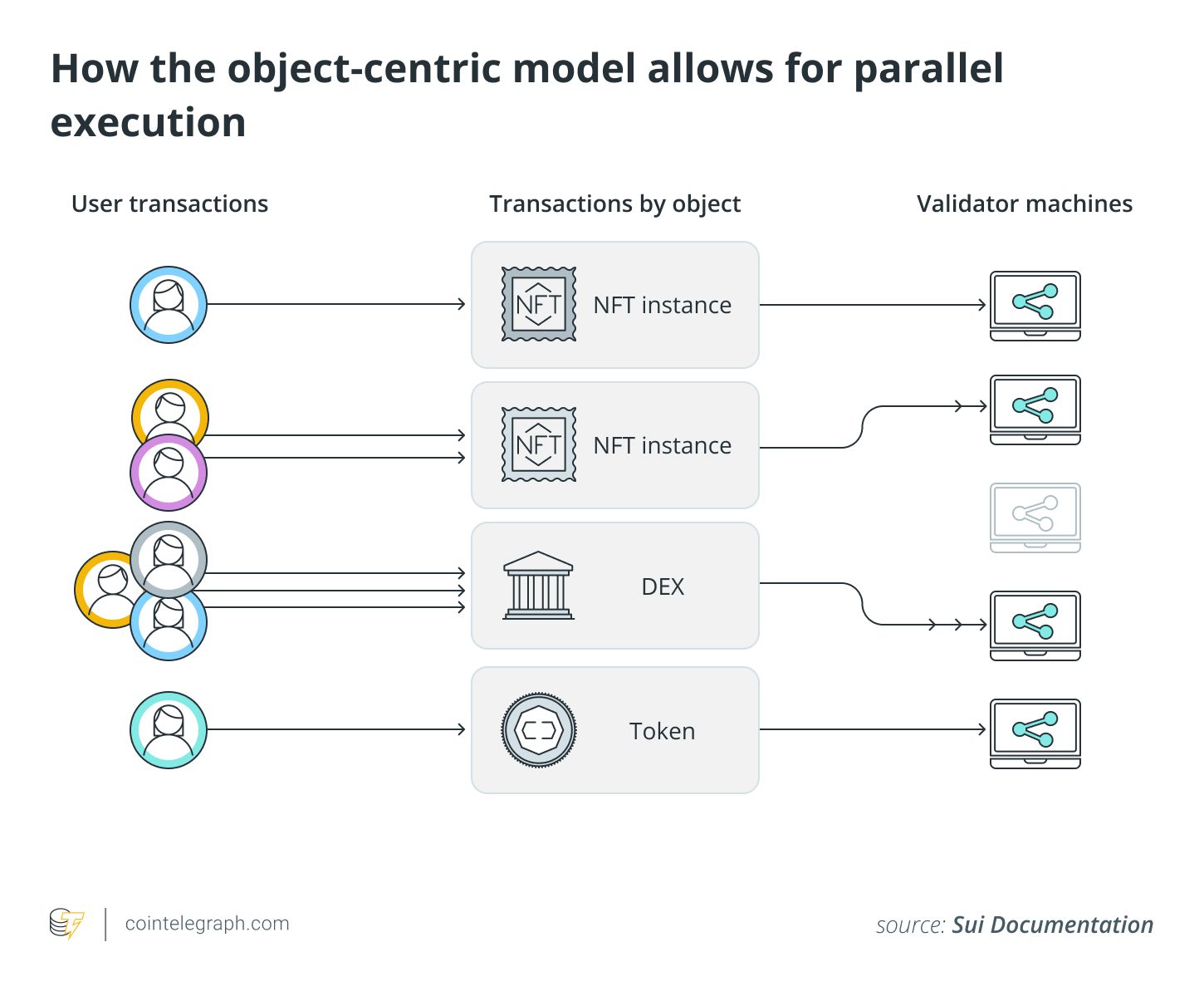
The optimistic execution method, used by networks like Monad and Aptos, assumes all transactions are independent and re-executes conflicting transactions retrospectively. While this approach is simpler, it can lead to computational inefficiencies.
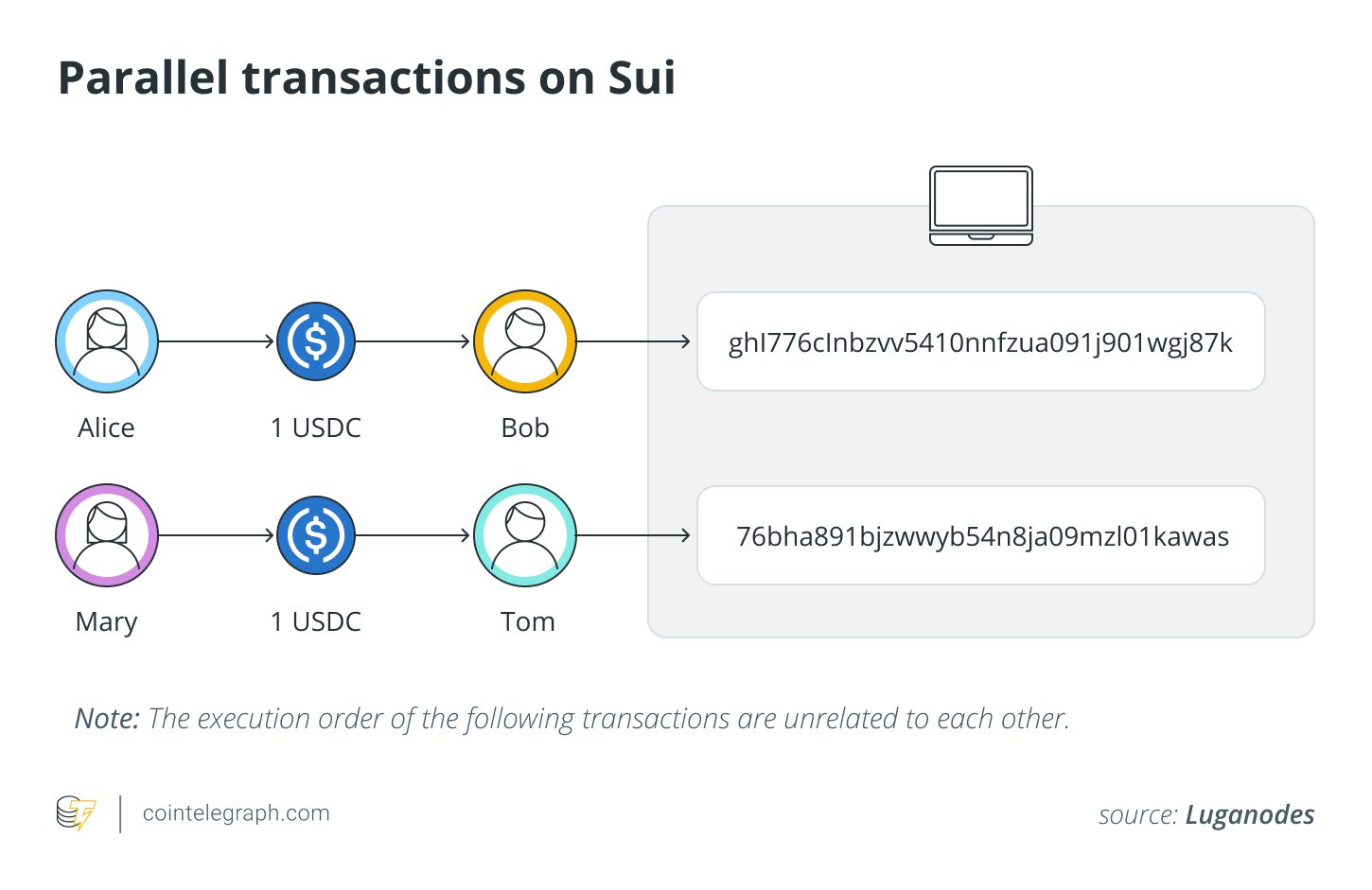
Sui vs Account-Based Chains: A Comparison
Account-based chains like Ethereum utilize a more traditional approach to handling transactions and state. While versatile, this approach requires developers to implement additional checks to prevent security vulnerabilities like reentrancy attacks. The object-centric model, with its linear logic and capability-based security, simplifies development and ensures more robust resource management.
Account-based architectures face issues with sharding as they require each account’s balance and state to be updated and synchronized across shards. This maintenance of consistency introduces latency and complexity and often requires inter-shard messaging and coordination. Sui’s architecture is more effective, allowing objects to be processed and managed separately without global state synchronization.
Conclusion
Sui’s object-centric model and Move programming language present a compelling alternative to traditional blockchain architectures. By prioritizing security, scalability, and efficient asset management, Sui is well-positioned to become a leading platform for decentralized applications and digital asset innovation.